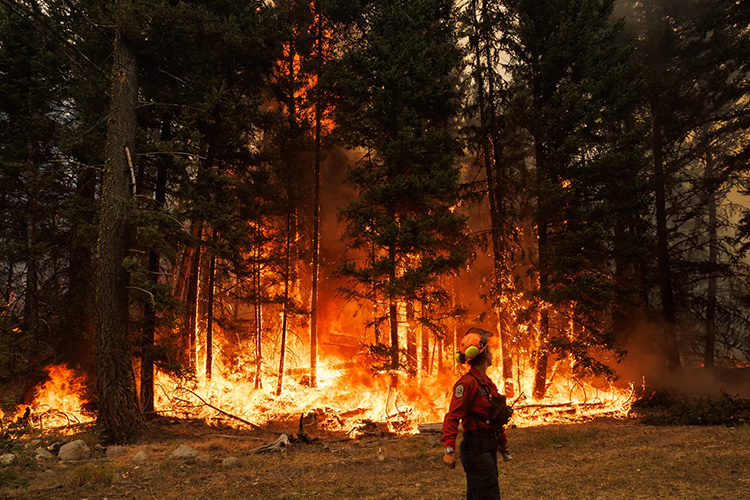
Nearly 6,700 wildfires have burned down Canada this wildfire season. photo by Jesse Winter
The wildfire season in Canada this year was unforgettably tragic.
Wildfires in Canada have been breaking records all year long and are only now starting to slow down. As fall progresses and the weather gets cooler, residents are finally able to breathe again as the fires come to a halt. With a dry spring earlier this year, professionals warned about the likelihood of devastating wildfires and they were absolutely right – Canada’s wildfire season has felt endless.
Starting in May and dying down in October, the season for wildfires is six long months of heat. “It was unusually hot and dry in Canada during the spring, allowing the fuels that drive wildfires to dry faster and earlier than ever,” stated the North Carolina Natural Disaster Research Page. Not only did the climate affect the severity of the wildfires, but the fires also grew due to human impact. With an increase in consumption of fossil fuels, greenhouse gas emissions have increased, resulting in climate change. The Action for Climate Emergency (ACE) researchers said that “the intensification of wildfires, fueled by climate change, has led to a staggering increase in burned areas. In the last 40 years, almost 40% of forest area burned in southwestern Canada has been attributed to emissions from the top largest fossil fuel producers.”
From a broader perspective, human impact on wildfires is typically related to climate change, but smaller actions such as campfires and smoking can contribute to wildfires as well. Although they seem harmless, smoking and building campfires actually contribute to the wildfires significantly. A report from 2019 by Len Garis explained that nearly 11% of wildfires in Canada were caused by smoker materials like thrown away cigarette butts or burning embers. With an increase in smokers all throughout the world, this percentage was predicted to escalate each year wildfire season started up again. Fox 61 News also stated that “humans cause about 85% of all wildfires in the country. Common causes include campfires, burning of debris near the wilderness, vehicle use and malfunctions, discarded cigarettes, and intentional arson.”
The Canada wildfires mainly take place in British Columbia (the Western Province of Canada), the Northwest Territories, and Yukon. These locations contain large amounts of inaccessible rural land, meaning that the wildfires spreading in these areas are not easily found or controlled because the land is extremely difficult to reach. This land is far away from contact of big cities and large populations throughout Canada, but unless found quickly, wildfires can spread rapidly and progressively more dangerous as they go untreated.
Due to the health hazards related to inhaling wildfire smoke, residents living in British Columbia, the Northwest Territories, Yukon, and several more small towns were asked to evacuate. “Around 30,000 households were under orders Saturday to evacuate their homes in western Canada’s British Columbia and the Northwest Territories,” stated CBS news. In total, nearly 200,000 people were evacuated during wildfire season. Furthermore, the dangers of the fires spreading quickly motivated people to leave their homes as well.
Fortunately, the start of snowfall in Canada is slowing down the spread of wildfires remarkably. Though four firefighters have sadly lost their lives this wildfire season, their comrades are still working tirelessly to put out the relentless flames. The Canada wildfires have burned about 18.4 million hectares so far – roughly the size of North Dakota – but residents as well as people around the world are hopeful that the combined efforts of the brave men and women fighting the fires as well as cooling temperatures will help to contain the flames.